This article was co-authored by Rachel Guffey. Rachel Guffey is a Plant Specialist and the Owner of Jungle House, a house plant shop based in Lawrence, Kansas. She specializes in plant education and caring for indoor plants. Rachel is passionate about using plants to help combat seasonal depression. She aims to make plants feel more accessible and approachable to everyone. Rachel has owned over 500 plants at one time.
wikiHow marks an article as reader-approved once it receives enough positive feedback. In this case, 96% of readers who voted found the article helpful, earning it our reader-approved status.
This article has been viewed 71,336 times.
Moss is an incredibly resilient and versatile plant. It doesn’t need fertilizer or much water to grow and it’s great for water filtration and erosion control. Moss makes a great addition to any garden, but it can also be grown indoors if you do not have space to grow it outside. By creating a damp, well-lit area with high humidity, you can grow moss in your home in no time!
Steps
Getting Your Materials in Place
-
1Purchase large, transparent containers or a terrarium. These can be glass or plastic containers. Just make sure that they’re wide and shallow, so you can easily reach into them to maintain your moss. If you go for a terrarium, be sure it comes with a lid to best store your moss.[1]
- You can pick up these items at your local crafts or home improvement store. You can also buy these containers online. The size of the container you pick depends on your budget, the amount of space in your home and how much time you want to spend maintaining the garden.
- A glass cloche is a great option for your moss.[2]
-
2Line the bottom of the moss garden with pebbles to create a base. The base only needs to be one pebble deep. When you’ve covered the entire bottom of your container or containers, your base it set. Saturated sand also makes for a good base when it comes to a variety of moss species. Colorful and differently-shaped rocks can enhance the aesthetics of your moss garden, so be as creative as you want.[3]
- You can scavenge for pebbles near your home or you can pick some up at a local landscaping or home improvement store. You can buy saturated sand at your local hardware store or order some online.
- If you are going to put forest mosses in your garden, avoid potting soil as a base.
- You can also use peat moss as a base for your moss.[4]
Advertisement -
3Apply pine needles or rotten bark to the base. Like with the pebbles or sand, you only need one evenly spread out layer across the base. Cover the pebbles or sand with pine needles and rotten bark you find outside. Most moss species prefer these items as opposed to potting soil because it helps them develop faster.
- You can use either pine needles or rotten bark or mix both together to put over top of the base.
-
4Collect the moss from areas around your home. You can find moss on stumps, logs, soil, or rocks in upland areas. When you find some, peel it gently from its base and put it in a clean container to transport it back home. Twigs covered in moss also work well for this project. Make sure to wear gloves while you do this.[5]
- Always ask permission from the correct authorities if you plan on collecting moss from public land or property.
- You want enough moss to cover your base entirely, so bring your containers of choice with you to get an accurate measurement of how much moss you need.
Warning: You can buy moss online or at a floral shop if none grows near where you live. However, these mosses are often preserved, sometimes in chemicals. Preserved moss is usually dry, which means it can be difficult to work with. If you do want to buy moss, make sure you go for a fresh, living moss.
Putting Together Your Moss Garden
-
1Place the large sheets of moss over the base. The moss should go directly on top of the stones and bark you’ve already set in place. Layer the moss so that every bit of the base is covered.[6]
- When you view your moss garden from above, you should only be seeing the moss itself, not the rocks or bark below it.
Tip: Put other crumpled bits of moss around the base to utilize every bit of moss you collected.
-
2Stick toothpicks into the moss to keep the large sheets in place. Put toothpicks every 5 inches (13 cm) along the outer part of your moss garden. Securing your moss can prevent disturbances from disrupting its development.
- The toothpicks will not harm the moss in any way, so you can keep them in your garden as your moss continues to grow.
-
3
Maintaining Your Moss Garden
-
1Cover your containers with a lid to keep the garden moist. Moisture from the moss will evaporate in the slightly higher temperature created by the closed containers.[9] The water vapor condenses on the containers’ walls and falls back to the moss below. This generates a cycle and a constant supply of water for the moss, which will stay damp and healthy as a result.[10]
- Since the moisture is consistently recycled back to the moss, your garden only needs minimal care.
Tip: At least once a month, take the lids off the containers for 10-20 minutes to let your moss air out.
-
2Store your moss garden away from sunlight. Too much sunlight will dry up and harm your moss. However, this is where things can get somewhat tricky. The moss still needs to be in an area that with decent air circulation and a light source nearby. Keep the moss garden near a slightly-cracked window and in a well-lit room.[11]
- If you’re going to put a lamp next to your moss garden to give it light, make sure the lamp isn’t right over top of the container. Too much exposure to light will hurt the moss.
Warning: A common mistake is to place the moss in a dark area under the assumption that this will keep the humidity high. In fact, moss needs light to photosynthesize its nutrients, so don’t make this mistake!
-
3Spray the garden 2-3 times a day with distilled water. Using a spray bottle, lightly mist your moss multiple times a day to keep it damp and healthy. Make sure to close your containers immediately after spraying so the moss can keep reusing the water.[12]
- You should constantly check on your moss to see how it’s doing. If your moss starts to fade or feels dry to the touch, apply the water.[13]
Community Q&A
-
QuestionWon't taking moss from the outdoors potentially bring in bugs and other critters that could spread to other indoor plants?
 noCommunity AnswerThat's why you should soak your moss in water before you plant it. It will not harm the moss. Keep switching the water out until it isn't murky anymore- soak the moss for about 2 minutes in water, then switch.
noCommunity AnswerThat's why you should soak your moss in water before you plant it. It will not harm the moss. Keep switching the water out until it isn't murky anymore- soak the moss for about 2 minutes in water, then switch. -
QuestionDo you need soil for this?
 OceanaCommunity AnswerIt is optional,as moss can grow without soil because it has no roots.
OceanaCommunity AnswerIt is optional,as moss can grow without soil because it has no roots. -
QuestionDoes it have to be covered, and could I put it in an flower pot and mist regularly?
 RatCommunity AnswerConsider putting on a cover to keep the condensation in. You may also have success in keeping it the open. If you do not add a cover, just mist it more regularly.
RatCommunity AnswerConsider putting on a cover to keep the condensation in. You may also have success in keeping it the open. If you do not add a cover, just mist it more regularly.
Things You'll Need
- Large, transparent containers or a terrarium with a lid
- Toothpicks
- Spray bottle with distilled or purified water
- Gardening gloves
- Lamp
References
- ↑ http://smallgarden-ideas.com/indoor-moss-garden-ideas
- ↑ Rachel Guffey. Plant Specialist. Expert Interview. 5 August 2021.
- ↑ https://www.youtube.com/watch?v=VhROyGXI0UU
- ↑ Rachel Guffey. Plant Specialist. Expert Interview. 5 August 2021.
- ↑ https://www.youtube.com/watch?v=VhROyGXI0UU
- ↑ https://www.youtube.com/watch?v=VhROyGXI0UU
- ↑ https://www.partselect.com/blog/grow-moss-in-your-garden/
- ↑ Rachel Guffey. Plant Specialist. Expert Interview. 5 August 2021.
- ↑ Rachel Guffey. Plant Specialist. Expert Interview. 5 August 2021.
- ↑ https://www.ecoponics.com.sg/difference-closed-open-terrariums/
- ↑ https://www.partselect.com/blog/grow-moss-in-your-garden/
- ↑ https://www.partselect.com/blog/grow-moss-in-your-garden/
- ↑ Rachel Guffey. Plant Specialist. Expert Interview. 5 August 2021.



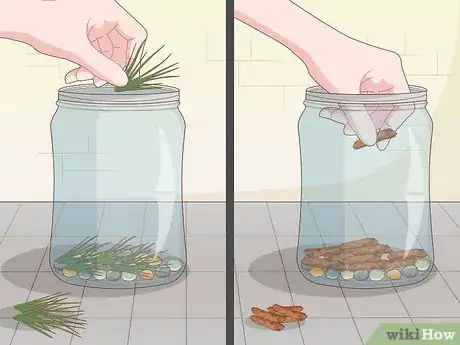


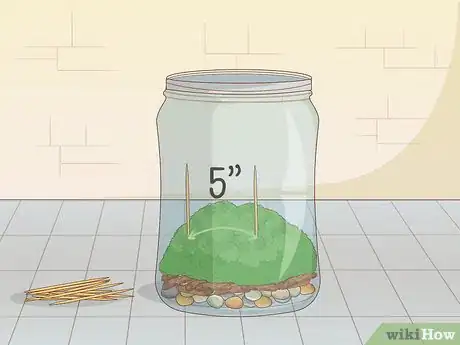

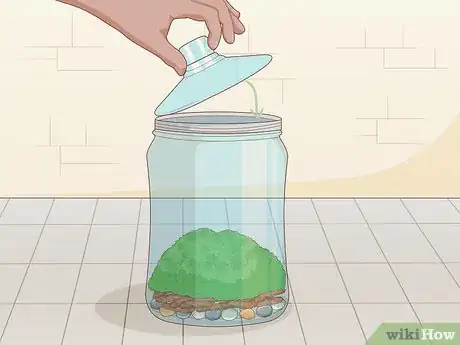
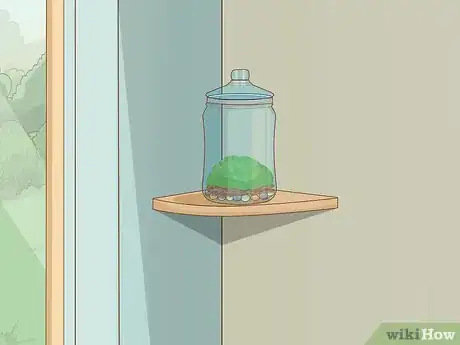
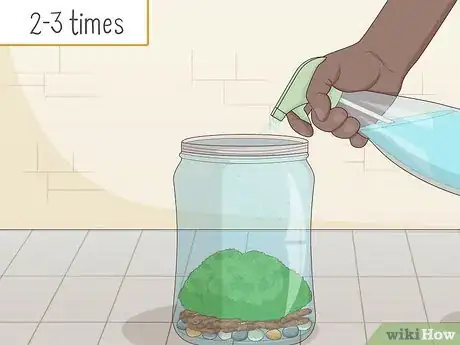
-Step-11.webp)

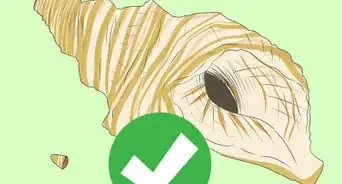


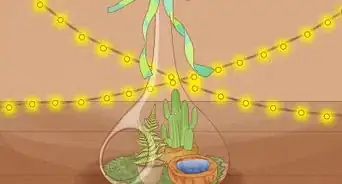










-Step-11.webp)





































